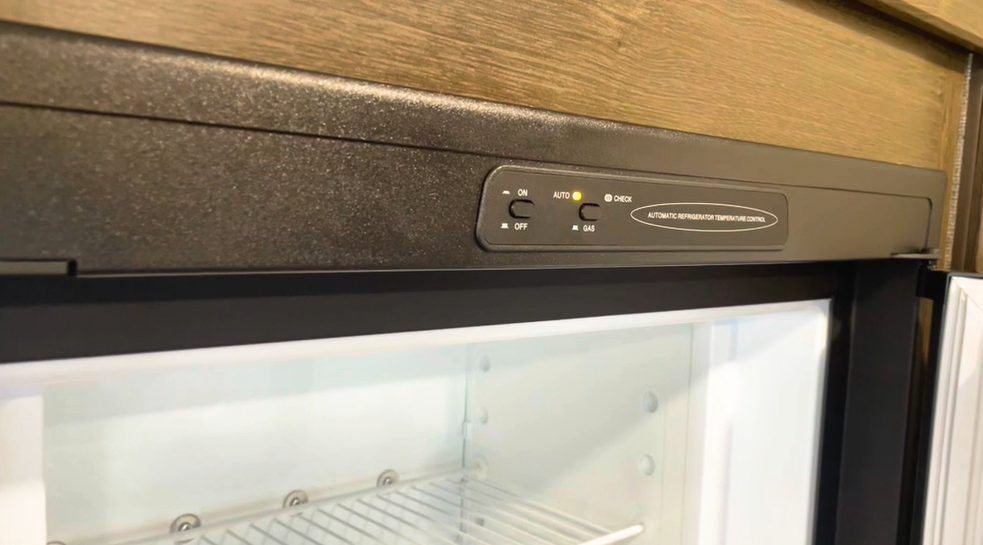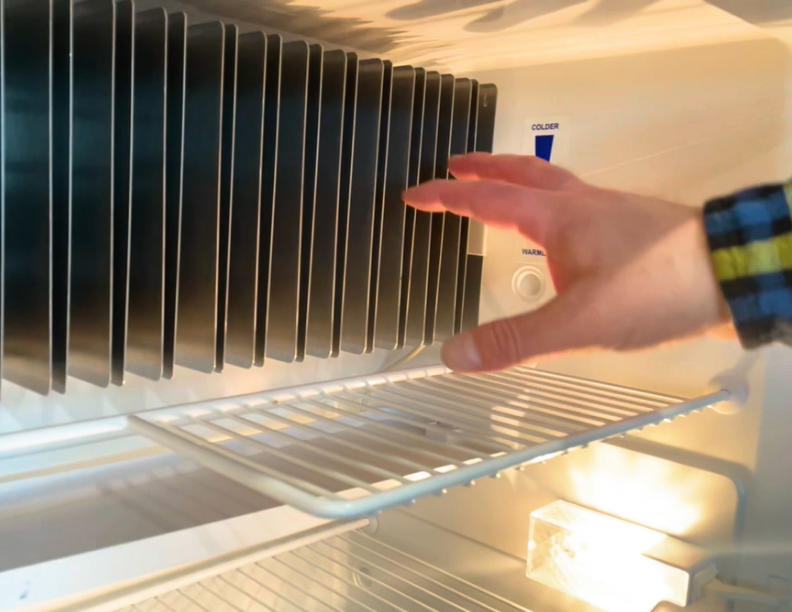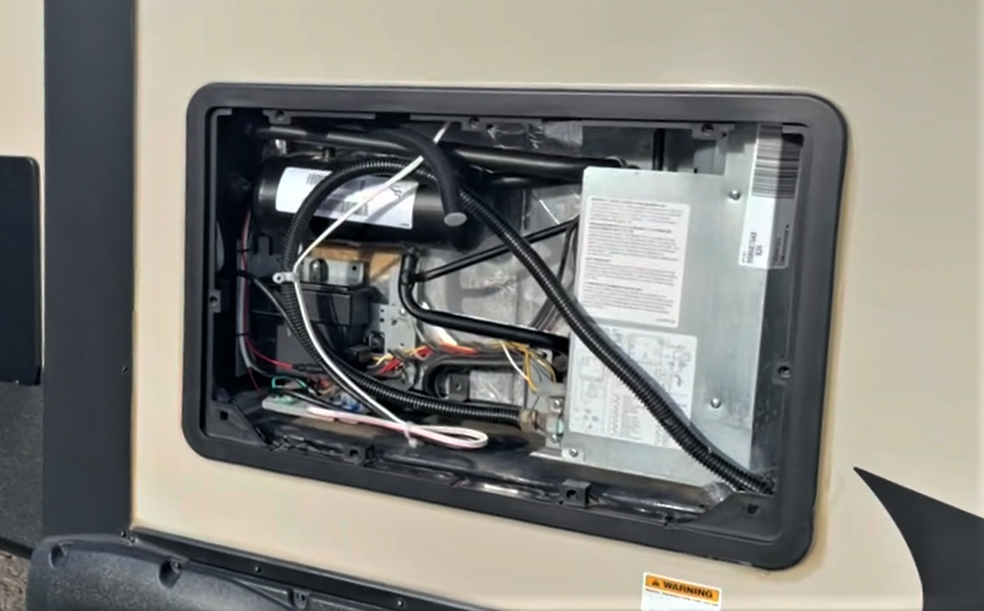Today we’re talking about your RV fridge.
Most commonly, it will be a 2-way fridge, which means it will work on Propane or 110 Volt. There are two switches: On/Off and Auto/LP mode.

To make life simpler, we suggest you operate it in the auto mode, which means that it defaults to 110 V as soon as the trailer is plugged in and will revert back to Propane when the trailer is unplugged.

You’ll notice that the shelving is open wire design – there is a reason for that, and this is what you need to know:
An RV fridge, unlike your fridge at home that works by making cold air and blowing it around to cool your food, an RV fridge works by Removing Heat.
That means: the colder the food you put into it = the better the fridge will work for you.
In other words, if you take a 6-pack of coke and put it in here warm, it will take several hours for it to cool down because it actually adds heat to the interior of the fridge that has to be removed by the absorption unit. Does that make sense?
So, having room for air to move around the food inside the fridge is important.
Some people asks us:
“Should I leave the propane on to keep the fridge cold when I am driving?”
That’s not really a good idea because wind can blow out the flame.
These fridges are very well insulated, and a cold fridge will lose appx 1 degree per hour when it is turned off, so you’re not going to lose a lot of cold air if the fridge is turned off.
Any accumulated moisture collects on pan and runs out the back of the fridge.
Let’s have a look at the back of the fridge:

Back here you’ll find the Main fridge board, high limit switch, 110 V plug in – not much for you to mess around with here. BUT…
You do want to keep it fairly clean so that it operates properly for you.
The exhaust pipe will sometimes accumulate moisture, which can turn into rust which can plug the propane burner, and so on, so blowing it out with compressed air every once in and while isn’t a bad idea.
If you have any questions, let us know!
To know more about this topic, check out Rick’s video: